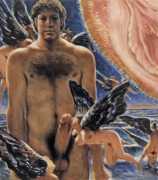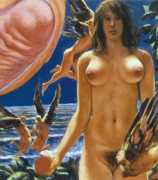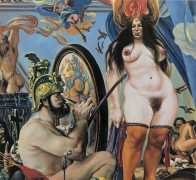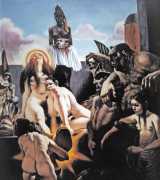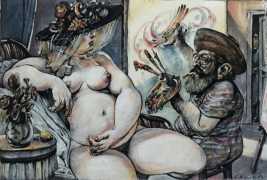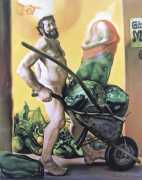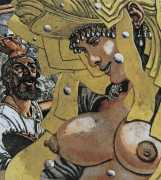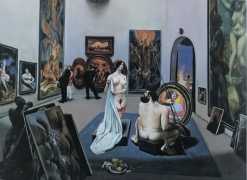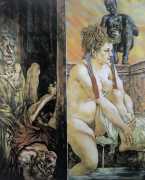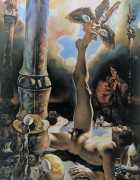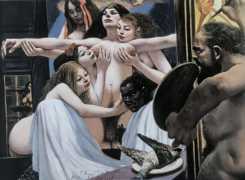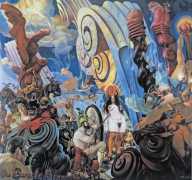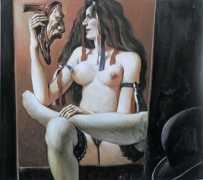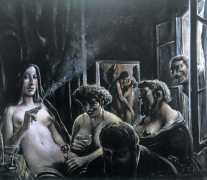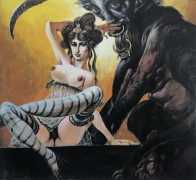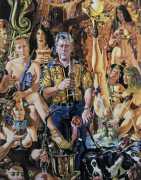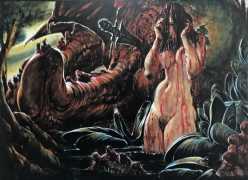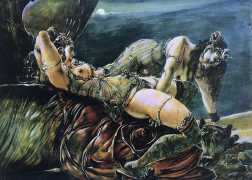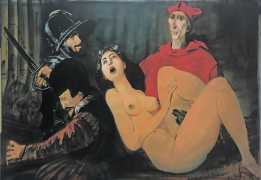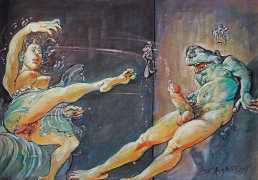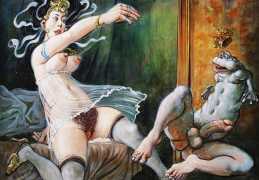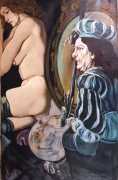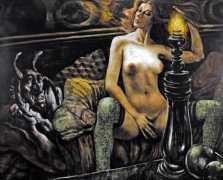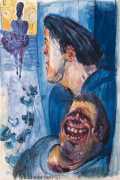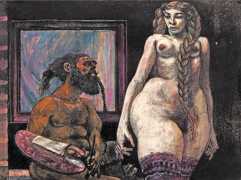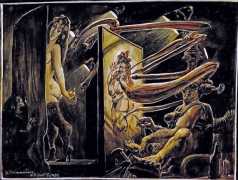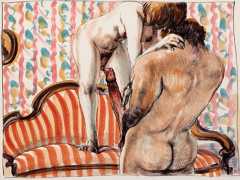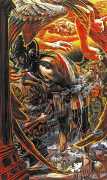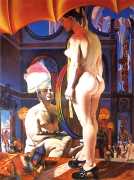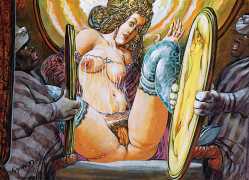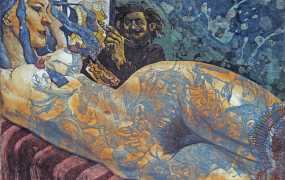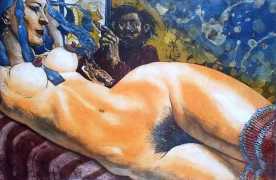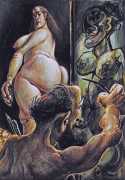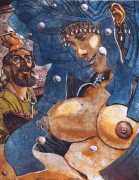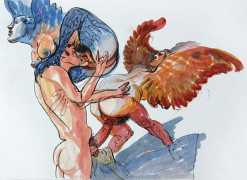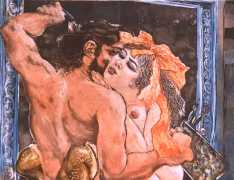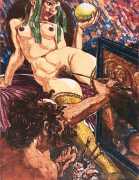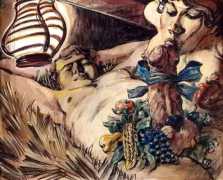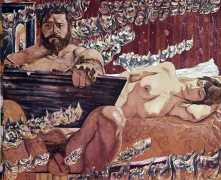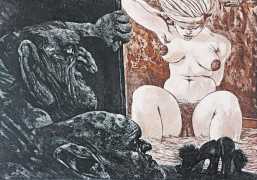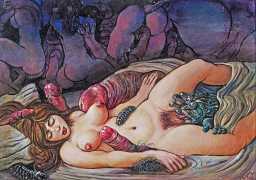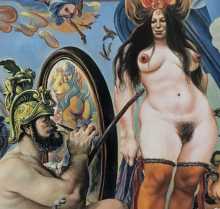 It was fairly late in his artistic development that Fritz Aigner felt it was safe enough to start painting erotic subjects, even though the impulse had almost certainly lain dormant for some time. When in 1966 he produced the Adam and Eve diptych shown here, he used the format of the devotional altar of the old Dutch style, with the two gold-leaf-framed tablets depicting explicit sexuality – angels caress Adam’s penis, while Eve’s vulva appears at the top of the two images.
It was fairly late in his artistic development that Fritz Aigner felt it was safe enough to start painting erotic subjects, even though the impulse had almost certainly lain dormant for some time. When in 1966 he produced the Adam and Eve diptych shown here, he used the format of the devotional altar of the old Dutch style, with the two gold-leaf-framed tablets depicting explicit sexuality – angels caress Adam’s penis, while Eve’s vulva appears at the top of the two images.
Aigler learned the principles for nude painting from none other than Herbert Boeckl, whose evening courses he attended during his time at the Vienna Academy, which resulted in a sold foundation for depicting the naked body. But following the traditions of nude painting for its own sake, or to depict classical scenes, was too easy. For a start, artist and model were never products of different worlds, especially in the context of who knew whom within Linz society. As Aigner wrote, ‘With women it’s very delicate, it’s complicated when I ask a woman to model for me. You might ask just like that, and she can sit or lie naked on your couch. Then she is lying on the couch, I’m ready to look at a naked woman, and it’s time to paint a picture. But a female nude is also a naked woman from Linz society. That’s when the problems begin. When I was younger it was easier – there were always a couple of young women in our artistic circle who wanted to catch a painter and lay their bait; it was childsplay to get a naked woman on the couch, as a model, as a Linz nude, in the painter’s studio. But it was also dangerous – in the blink of an eye such a woman was my wife, toddlers were screaming in the studio, and the woman, the Linz nude, had converted my studio into a cozy apartment.’
Most of Aigner’s erotic paintings were made in the late 1960s and 70s, when he had relatively few commissions; it also coincided with the opening up of society to sexual experimentation and imagery. But while his erotic works found their own clientele, he also discovered that polite Linz society had a distinct double standard around anything sexual, and sales of his non-erotic work were suffering as a result. As he wrote of this period, ‘I found out how thoughtless and uneducated people were walking past my pictures pretending not to see them, or I was scaring them so they became angry and aggressive, degrading me as a cock-painter. The ambiguity of Linz society became evident, which publicly opposes the perception of the erotic, yet in private is comfortable drifting into the bizarre and pornographic.’
As a result, after 1980 Aigner only dealt sporadically with explicitly erotic subjects and became more involved in other topics, which probably offered him more challenge. As Aigner wrote of that period, ‘That’s how the Linz nudes are – with passing time everything gets boring. There aren’t that many Linz nudes. Given the population of Linz and the capacity of Linz bedrooms, at the speed I can produce paintings the demand for the Linz nude is pretty quickly exhausted.’


